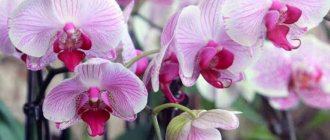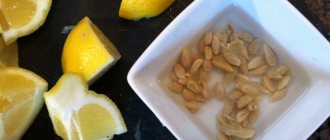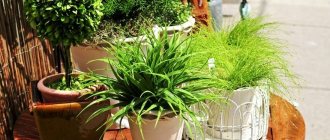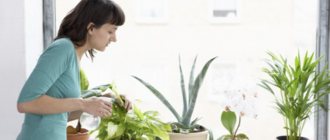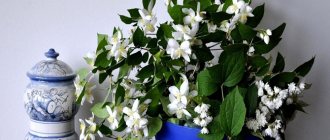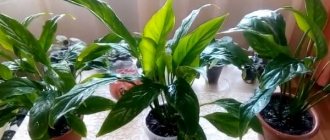If you're the type of person who follows fashion trends, this habit can continue in a variety of areas: from the choice of clothing and the latest technology you use to the choice of indoor plants. Some types of plants have gained great popularity recently, and we will tell you about them. As the new year approaches, the popularity of plants may change, but we have tried to collect the latest and most up-to-date information.
So, what are the trendiest indoor plants in 2020? The most trending indoor plants for 2022 are as follows:
- Money Tree
- Zamioculcas
- snake plant
- Philodendron white knight
- Peperomia Ginny
- Hoya majestic (imperialis)
- Philodendron with carved leaves
- Ceropegia Sanderson
- Tradescantia zebrina
- Alocasia Pink Dragon
- Neon Arrowroot
- Livistona Chinese
- cacti
- Spurge
- Stefania Pierrei
- Monstera deliciosa
While some of the plant types above may seem a little familiar to you, most of the options we're going to discuss in this article will make you look at the well-known houseplant in a whole new way. If you're ready to add some exciting new plants to your home garden, then keep reading.
Money Tree
This first fashionable recommendation for choosing indoor plants comes from popular glossy magazines, which named the money tree or Pachira aquatica the most popular indoor plant of the year. This wetland tree from the malvaceae family has also been declared the "easiest house tree" that doesn't require anything special to care for. The money tree received this status back in 2011, which proves that the popularity of the money tree has lasted quite a long time and is not losing ground.
In addition to being easy to care for, the money tree's stem is an excellent weaver, and its simple, bright green leaves can brighten up any room. If you are a fan of Feng Shui, it is believed that indoor plants such as the money tree can bring good luck and positive energy into your life. And who doesn't want to bring more positivity into their lives in 2022 or any other year?
Zamioculcas
Zamioculcas is one of the well-known plants, but you are unlikely to find or have encountered a similar indoor plant before. Zamioculcas is also sometimes called the dollar tree. Already this year, the plant has attracted so much attention because of its signature dark color, which looks majestic and gothic. Whether Zamioculcas grows alone or is part of a larger home garden, this plant is definitely something to look out for. It's no surprise that WallyGro magazine named it first on its list of trendy plants for 2022.
If you're not so keen on dark color schemes, the variegated Zamioculcas plant is a beautiful mix of pale yellow and bright green. However, the black color of the plant looks much more impressive and unusual than other combinations. Before growing Zamioculcas at home, you should know that this houseplant grows very slowly. For this reason, it is more difficult to find in garden centers. But this gives it even more popularity, rarity and beauty - these are precise trendsetters.
Scandinavian clean lines
In the Scandinavian interior, indoor plants carry the same load as large designer accessories: they give minimalism the charm of elitism. Each plant is “presented” so that it is the center of attention.
What new things have the trendsetters in the field of design enriched this style with? Lawns came into the interior. They have been used before in the Scandinavian style, but only selectively. Now the lawn is given a wall, a podium, and some other significant spaces. In continuous landscaping, cereals, moss, hanging plants and low leafy plants are used.
Interior landscaping in Scandinavian style
It was in the Scandinavian style that vertical hanging gardens were first used. They are framed like a painting. They create a picturesque carpet of stems and leaves of different textures. Built into niches. They replace the walls.
Vertical flower bed in a Scandinavian interior
Florariums – inventive mini-greenhouses for dwarf plants – effectively and organically complement the decor.
An extravagant way to present plants is hanging flowers from the ceiling. And a completely surreal example of phyto-interior design - inverted pots with stems growing downwards.
snake plant
The snake plant is a good choice on the list of indoor plants for beginners. One of the amazing things about the snake plant is that it has absolutely no roots. The snake plant is also known for its well-defined, vertical leaves with sharp edges. The leaves can be the same color or a combination of several shades, and sometimes the leaves of the snake plant even come across stripes or other patterns.
In 2022, Pantone magazine's color of the year is classic blue. The magazine writes about this color: “Inspiring calm, confidence and connection, this lasting blue hue underscores our desire for a strong and stable foundation on which we will build as we cross the threshold of a new era.”
Any houseplant that pairs well with classic blue is a winner in 2022, and it just so happens that the snake plant fits the bill very well.
Warm to cold: indoor flowers in a high-tech interior
What might greenhouses look like on a space station? Probably the same as plants in high-tech apartment design projects.
First of all, these are lawns, horizontal and vertical. By the way, a vertical lawn is a complex engineering structure with an automatic watering system, which conceptually fully complies with the principles of high-tech style.
Vertical gardening for high-tech interiors
Florariums, miniature and voluminous, are semi-closed ecosystems with a microclimate. They are picturesque and perfectly harmonize with the glossy surfaces of the interior.
A vintage element – ceiling plants growing “upside down”. This is something that surprises immensely every day, something that is impossible to get used to. But it is in high-tech that such interior landscaping seems quite logical.
Creative plants growing upside down
Philodendron white knight
You're probably very familiar with Philodendron, a member of the Araceae family, which has nearly 500 different species. One of them is the White Knight Philodendron. Although this species is a rarity, it has made it onto the list of 2022 fashion trends, adding different versions of everyone's favorite traditional houseplants.
Instead of bright green leaves, the White Knight variety has a darker shade of green. The leaves are mostly the same shape and size, but they have many white spots in a random pattern. These may be small spots on some leaves and large white areas on others. Don't forget the red stems either, as they add a pop of color to this popular houseplant.
Syngonium Pink Splash
Add a touch of pink to your home with one of the most unusual syngoniums. It's like a vine with beautiful pastel pink spots on the leaves. Syngonium prefers to let the soil dry completely before watering and likes to grow in bright, indirect light.
Andrei Malakhov refused registration in the capital in favor of his hometown
You can remove oil stains from wood with your own hands: take note of the method
A dog accidentally wandered into a bachelor party and now she and her 7 puppies have a home
Peperomia Ginny
Even if you're not following the color trends in 2022, it's hard to ignore the fact that popular color influences play an important role in home garden design. Instead of indoor gardens with variations of green, try mixing others to add new colors created by Mother Nature herself. The next few houseplants I'll talk about will allow you to create a beautiful rainbow display, starting with Peperomia Ginny.
It is a colorful houseplant with green centers, yellow edges and bright red or pink edges. It's no surprise that this beautiful peperomia plant, a member of the Piperaceae family, goes by other names such as tricolor peperomia, red-edged peperomia, or rainbow peperomia.
To keep the color as vibrant as possible, provide your peperomia with moderate to bright light and remember to only water when the soil is very dry.
Although peperomias are not succulents, they will still store water in their stems and leaves, so they do not need to be watered very often.
Artificial
Artificial greenery will be a wonderful solution for those who want to diversify their interior, but do not have the opportunity to fully care for living plants. When composing compositions, do not occupy all the window sills and corners with pots, use your imagination. For example, artificial flowers on the wall will look original. Before you start, read the advice of professionals:
- An arrangement of artificial plants will look great on a coffee table - it doesn’t need a lot of light, and the covering won’t deteriorate, since they don’t need to be watered.
- Tall flowers look great in floor vases. This solution will be an excellent decoration for the living room or hallway.
- Artificial climbing plants can be beautifully placed on the wall. They will not deteriorate from lack of light, they will not have to be sprayed, which will help preserve the finish.
Hoya majestic (imperialis)
Hoya majestic is also on the list of trendy plants for 2020 and is another eye-catching plant. This houseplant is known for its flowers with soft white stamens and red to pink petals. Hoya petals are shiny, smooth and pointed at the edges, which gives them a unique look. Additionally, you will be hard-pressed to find a variety of hoya with flowers larger than imperialis.
Admittedly, Hoya majestic starts to bloom very slowly, but this only adds to its attractiveness. If you put in the time and love, this hoya will eventually mature and begin to decorate your room with the flowers that made it so famous.
When your hoya starts to bloom, you'll want to smell the flowers. As people familiar with these exotic flowers say, the pleasant aroma they emit throughout the home will become stronger after sunset. So keep this in mind if you ever have the opportunity to smell Hoya imperialis.
What are the options?
All popular plants presented in specialized retail outlets are divided into four main types:
| View | Description |
| Decorative deciduous | They have a long life expectancy. With proper care, they will delight owners for many years. Leaves are rich green all year round. You can find specimens on sale that are recommended to be kept cool during the winter. |
| Decorative flowering pots | The best options for creating flower arrangements. After losing their attractive appearance, they are removed from the general mass and thrown away. If the tubers are still alive, they can be used to grow the plant next year. Life expectancy is minimal. |
| Decoratively blooming | Perennial plants. After flowering, the leaves are shed or lose their attractiveness. In winter, you need to provide them with a cool room, and in warm summer, place them outdoors. |
| cacti | They are very popular among lovers of the unusual and evergreen. The stems are densely covered with spines and hairs. On sale you can find specimens with leaves. Some subspecies are ready to delight their owners with flowers. They do not require special care. They belong to the category of long-livers. |
Based on external differences, flowers are divided into the following groups:
- Bushy. The main difference from their counterparts is that many stems grow from the soil. They can be vertical or slope towards the ground. The list includes coleus, aucuba, and begonia.
- Poaceae. Reminds me of cereals. The leaves are narrow and long, collected in a bunch. Prominent representatives are narcissus, sedge, and billbergia.
- With an erect stem. The species includes various representatives, completely different in height, thickness and characteristic features. The only thing they have in common is one straight trunk, like citrus, pandanus, and laurel.
- Rosettes. The name comes from the leaves collected in a rosette. Compact species, which includes primrose, gusmania, gloxinia.
- Lianas. They are a decoration for office buildings. Can also be found at home. They grow quickly, hang from the walls, curl, and crawl in different directions. To give the plant a beautiful appearance, various sticks, trellises, and cords are used. This category includes stephanotis, even-leaved bells, and ivy.
- Globular. The usual leaves are missing. The trunk is flat, ribbed, and resembles a ball. Covered with spines or hairs. Prominent representatives are parodies, astrophytums, and mammillaria.
Taking into account the location of the flower, they are:
- floor;
- hanging;
- wall-mounted;
- desktop.
Based on the life expectancy indicator, the following groups of plants are distinguished:
- perennial;
- two-year-olds;
- annuals.
Where can you buy the product you like? All flowers can be purchased at specialized retail outlets. You can place an online order in an online store only for seeds for self-cultivation. Which plant is best to buy depends on many factors, including personal preferences. Everyone's selection criteria are different. Some prefer to deal with inexpensive and non-capricious species. Others hunt for new products, regardless of how much they cost, others carefully review owner reviews, and others listen to the advice of designers and flower growers. The main thing is that it fits all parameters and has acceptable characteristics. You cannot make mistakes when choosing.
Philodendron with carved leaves
If I asked you to close your eyes and imagine a well-decorated living room, like in an interior decorating magazine, what kind of houseplant would sit in the corner? You'd probably say carved-leaf philodendron, sometimes called bipinnate philodendron.
Although this philodendron variety was popular for many years leading up to 2022, its foliage shape also helped it make it onto this year's trendy plant list. The leaves of this plant almost split like palm leaves, giving your home or office a tropical look without even trying. This gorgeous houseplant prefers bright light, fertilizer on a bi-weekly basis and warm indoor temperatures that never drop below 10 degrees Celsius.
Ceropegia Sanderson
If you've been looking for a beautiful plant to add to your home garden, you've already found it. Ceropegia sanderson, sometimes called the umbrella plant, fountain flower or parachute plant, is a real hit among this year's plants.
Ceropegia is an evergreen houseplant that has leaves similar to succulents. Flowers up to 8 centimeters in size grow on a stem. Although these flowers cannot open much, which occurs due to partial fusion of the corolla lobes.
The petals are anything but simple, as they form a dome over the flower, reminiscent of an umbrella. If your friends and family are plant enthusiasts too, they'll definitely want one for themselves when they see you growing Ceropegia Sanersona!
Tradescantia zebrina
Returning to the selection of colorful plants that top trend lists for 2022, next up is the purple-hued zebrina. This is Tradescantia, a perennial wildflower with more than 70 species. As you may have guessed, this variety of Tradescantia is known for its vibrant purple hue.
The striped pattern on the lush, pointed leaves ranges in color from light lavender to a darker, richer purple. This member of the Tradescantia family prefers shady conditions, so please avoid placing the plant in the sun to maintain its color. If the soil seems relatively dry, then it is time to water the plant. It is best if the room temperature does not exceed 40 degrees and does not fall below 7 degrees. Over time, the purple zebrina is known to grow between 1m and 1.5m in length, although most are less than 1m in size.
Fertilizer application
Feeding flowers is required. It is sold in all specialized markets and online stores. Consists of three main ingredients: phosphorus, nitrogen and potassium. The composition also contains microelements. Proportions vary, so the choice should be approached with the utmost seriousness.
Fertilizers for indoor flowers come in the following types:
- granules;
- pills;
- liquid.
Some scatter on the surface, others go deep into the ground. Watering occurs with liquids. This type of fertilizer is considered the most common and in demand. As a rule, the liquid components are mixed with water. Feeding can be made more or less concentrated to prevent overfeeding. Before proceeding with the manipulations, you must carefully study the attached instructions.
Alocasia Pink Dragon
Alocasia is a houseplant that we have not mentioned before. It is a member of the Araceae family and is considered a tuberous perennial plant. It grows primarily in eastern Australia and Asia, where there are around 80 species to choose from.
After this short introduction, we would like to focus more on a special variety of Alocasia - the pink dragon. While the standard Alocasia has dark green leaves with distinctive white veins, the Pink Dragon variety is a little more colorful. These soft pink flowers (or millennial pink if you want to keep things trendy) can grow quite thick and noticeable.
Alocasia Pink Dragon also gained recognition as a trendy houseplant during the year, but not for the same reason. Instead, this Alocasia variety is known for its reddish-brown stems and wrinkled leaves.
Popular models of flower pots
As for the criteria for choosing a container where green pets will grow, the requirements are approximately the same. The main thing is the latter’s comfortable state of health, but the materials can be very different:
- Baked clay - this material is quite stable, creating the most comfortable conditions for the rhizome. And covered with glaze, it also looks very beautiful. However, in terms of price, such forms are by no means cheap.
- Tree - these containers are very unusual, creating favorable conditions for root growth, but such pots are short-lived and expensive.
- Plastic - they don’t look so elegant, they are light in weight and can be jokingly knocked over; such pots quickly become unusable, but create a favorable atmosphere for the development of the root system.
- Metal products are not suitable for cultivation at all, since they instantly heat up or become supercooled, and their cost and durability leave much to be desired.
Therefore, preference is given to products made from natural materials. The shape of the container is also important - the best model is considered to be a truncated cone or pyramid. The volume of the container must match the width of the root system. It is important to choose pots of 0.5-1.5 liters and, best of all, with a tray of the same composition.
Neon Arrowroot
Arrowroot itself is a pretty good houseplant and is quite easy to grow. It is sometimes also called a prayer plant. A member of the Marantaceae family, this species is native to the West Indies and South America. For those of you who often wonder where some plant names come from, in this case it was the Italian botanist and physician Bartolomeo Maranta, the namesake of this houseplant. There are about 50 types of arrowroot, with neon arrowroot being the preferred choice for 2022.
Traditional arrowroot has large, oval-shaped, veined leaves with dark green, almost black patterns between each pair of veins. Neon arrowroot lifts the mood with yellow or bright green leaves decorated with beautiful red veins. If you want your plants to be mostly green, try red arrowroot, which only has red veins.
Also, don't worry if your arrowroot leaves grow downwards, this is normal for this species.
Livistona Chinese
Residents of the southern regions are probably familiar with the Chinese fan palm or Liviston, as it usually grows in warm climates. Although it is usually an outdoor plant, Livistona sinensis also does well indoors. Just make sure the room gets enough sunlight to allow the plant to develop its long, fringed leaves.
Palm fans have started to appear more and more often as trendy houseplants, especially this year. If you take a look at this type of palm tree, it's not hard to see why. Like a philodendron with carved leaves, you'll get a touch of tropical style in every room with a Chinese Livistona. If you have an office with lots of natural sunlight, then growing a Chinese fan palm in your office can make it look tropical, yet elegant or stylish. I hope you understand what I mean.
cacti
The cactus has been named another must-have popular houseplant for 2022. We've written before in an article about how cacti and their other succulent cousins change the look of your home garden because they are so different from other houseplants. Another reason so many indoor gardeners are crazy about the cactus in 2022 is that it is relatively easy to care for. It is a succulent after all.
What types of cacti are best to buy? If you only have low-light growing conditions, such as in an office, then the claw cactus, scarlet ball cactus, and Dutchman's tube cactus are options.
The rat tail cactus could be a trendy houseplant in 2022 as it is a small cactus that dangles in a pot and produces bright red flowers. The long-lived saguaro cactus, the white-haired Old Lady cactus, or the eye-catching Christmas cactus are other great choices that will fit into your fashionable aesthetic.
Fashionable aesthetics of the concrete jungle - a combination of loft and living plants
What does ficus do in a loft interior? No, he's not blocking a hole in the wall!
A large plant in an urban interior plays the same role as a red leather sofa or a painting in a gilded frame - working “in contrast”, it emphasizes the picturesque imperfections of industrial textures.
Well-groomed greenery against a background of concrete or brickwork enhances the shocking effect. For loft apartments, voluminous plants with expressive large leaves are selected, in stone tubs or metal containers adapted for them (photo).
Plants with large leaves are suitable for loft apartments
A daring technique for landscaping a loft is an imitation of an industrial greenhouse. Industrial lattice glazing, irrigation pipes and lush greenery in an enclosed space develop style ideas in an unexpected way.
Plants in flasks, transparent balls, in glass jars - these fashionable florariums seem to be created to create local green accents in an urban interior.
Florariums are ideal for loft-style interiors
Spurge
If you still love cactus, you can also look into the genus Euphorbia, which is part of the Euphorbiaceae family. Although spurge is not a cactus in itself, in terms of appearance it looks quite harmonious among other succulents. Plus, with over 2,000 different members of the genus, you're sure to have a wide selection of Euphorbia plants to grow in the near future.
You may even already have a spurge plant called poinsettia. At any time of year other than Christmas, you can admire Griffith's Euphorbia, also known as fireglow for its reddish-orange flowers.
Euphorbia Blue Glacier produces a variety of miniature white flowers and looks great in a pot. Additionally, although it does not bloom, blue glacier spurge has a lovely blue-green hue that pairs very fashionably with the classic blue color that is trendy this year.
Stefania Pierrei
Could 2022 be the year that the Stefania pierrei plant makes it to the list of the most popular plants? According to WallyGro magazine, most likely yes. Although some compare it to a cross between a Chinese money tree and a nasturtium, this houseplant is truly in a league of its own.
As a type of bulbous plant, stephania also grows on a bulb, which is very similar in appearance to a potato. Although this plant has only a few leaves from the roots, they are round in shape with lighter green veins. Unfortunately, when people notice this plant in their gardens, they are sometimes stolen, which makes it difficult to grow stephania in an open area, but this plant will look wonderful in the house.
Ficus rubbery
Time passes, but tree-like ficuses with leathery leaves remain popular. This plant does not require complex care, so it can often be found in the apartments of busy owners who value natural beauty.
Ficus practically does not grow in width, but it grows in height quite rapidly. Therefore, it is better to place it on the floor or a low table.
Monstera deliciosa
We can't complete this list without mentioning another big trendsetter for 2022 - a plant called Monstera deliciosa. In fact, it looks like this could be a banner year for the Monstera plant in general, as Monstera Adansona is also getting a lot of love.
Both plants are similar to each other and have bright, holey leaves. Adanson's species has leaves on a much smaller scale, while Monstera deliciosa has leaves that grow to large sizes. Monstera leaves are somewhat similar to philodendron leaves, but with more holes. This tropical plant is quite adaptable as it can tolerate both low and bright light.

